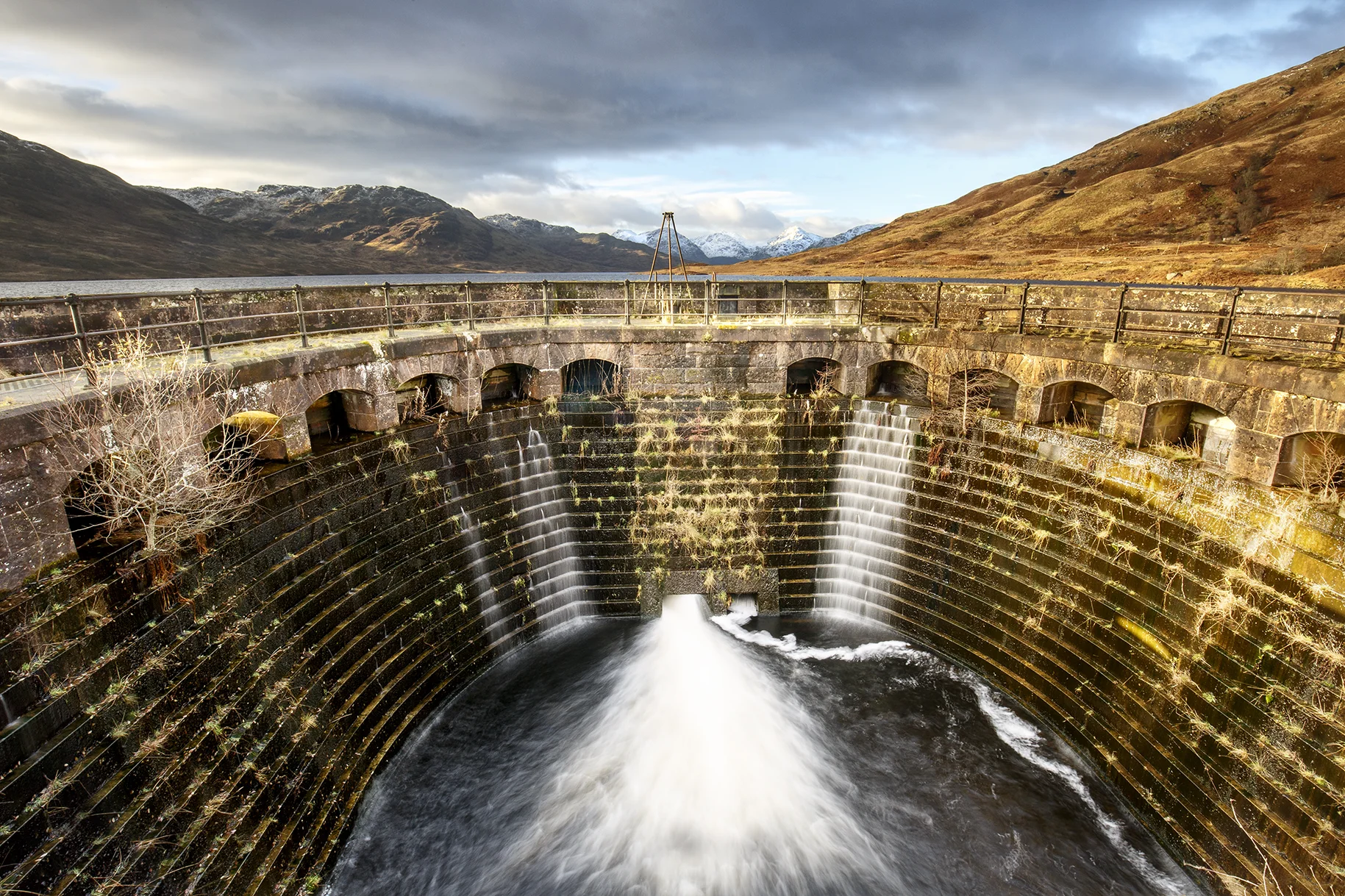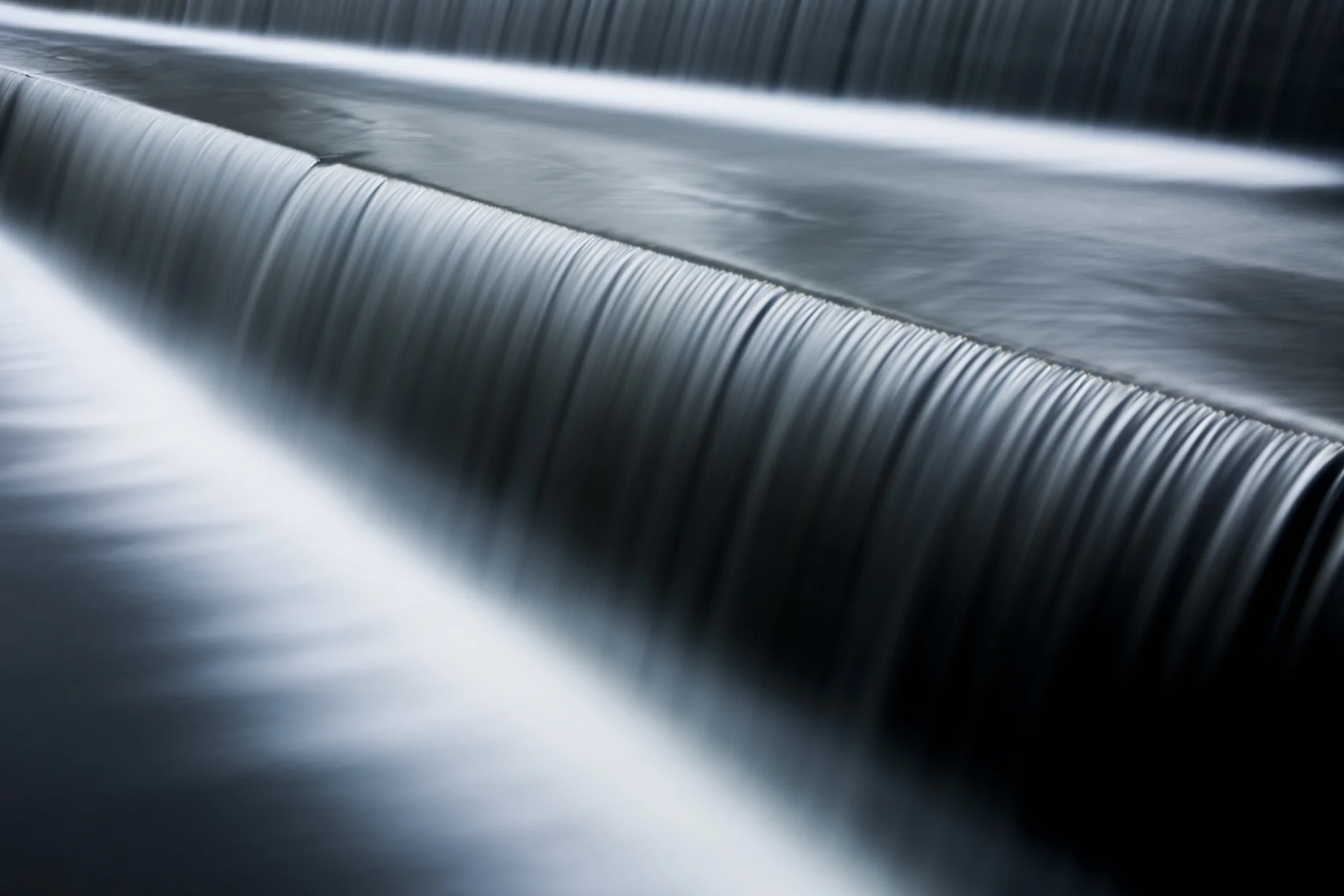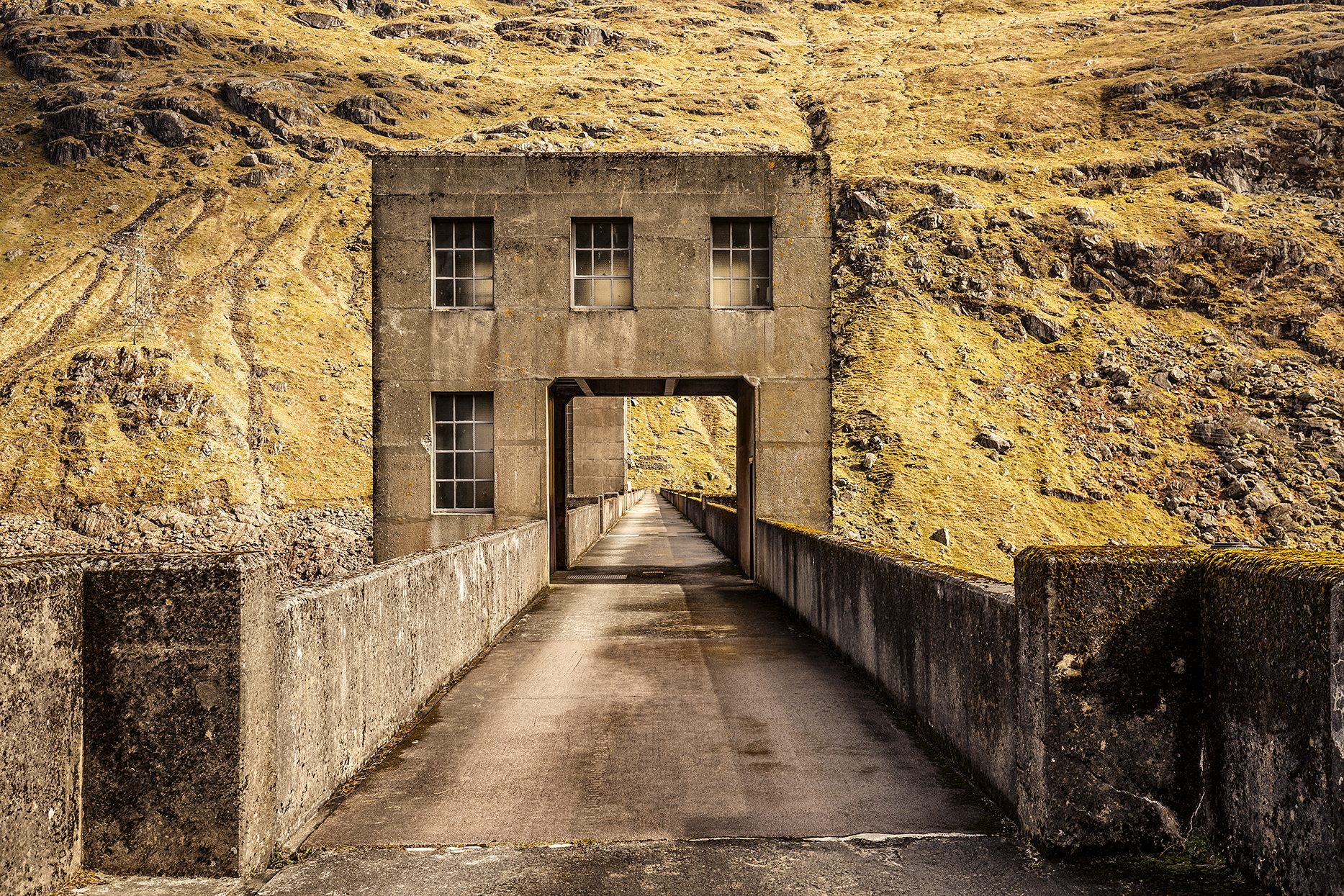Waterworks
This darksome burn, horseback brown,
His rollrock highroad roaring down,
In coop and in comb the fleece of his foam
Flutes and low to the lake falls home
A windpuff-bonnet of fáwn-fróth
Turns and twindles over the broth
Of a pool so pitchblack, féll-frówning,
It rounds and rounds Despair to drowning.
Degged with dew, dappled with dew
Are the groins of the braes that the brook treads through,
Wiry heathpacks, flitches of fern,
And the beadbonny ash that sits over the burn.
What would the world be, once bereft
Of wet and of wildness? Let them be left,
O let them be left, wildness and wet;
Long live the weeds and the wilderness yet.
Gerard Manley Hopkins, Inversnaid (1918)
Three decades after Gerard Manley Hopkins sung the praises of the “wild” waters of Inversnaid, work began on the Loch Sloy hydroelectric scheme, whose mighty pipelines are visible from the very spot in which he was inspired. Built with the hands of German and Italian prisoners of war, and later, those of Czech and Polish migrants, hundreds of working men died in the creation of the remarkable feat of engineering that is now the largest conventional hydroelectric power station in the UK. Above the tourist boats that ply Loch Lomond, and beneath the feet of walkers ascending the Arrochar Alps, runs a complex system of channels, aqueducts and dams which together control the flow of water to and from Loch Sloy. The dramatic peak of Ben Vorlich hides the 3km tunnel through which the water finally plunges hundreds of feet down the side of the mountain, generating electricity for the Highlands. Prior to the Loch Sloy Hydro scheme, only one farm in six and one croft in a hundred was estimated to have electricity. Today, a Scottish highland home without power is anomalous.
Sixty years after it was constructed, the infrastructure of Loch Sloy has become very much part of its environment: the sharp edges of its grey concrete blurred by exactly the same lichens which colour the stone of the mountains within which it sits. Loch Sloy remains a remarkable human achievement and an important exemplar of the Highlands as a productive, working landscape.
This documentary project celebrates Scotland’s water, and the work with which it is managed, whether its purpose is to drink, to dispose of our waste, or to power our homes and businesses. Since the mid- nineteenth century, the shape of the Scottish landscape has been completely transformed by water, but the labour, infrastructure, and architecture of our greatest national resource remains unsung, and largely undepicted. This project aims to change that: to make some of that work visible, and to celebrate it, as part of the stunning landscape which it shapes and defines.




